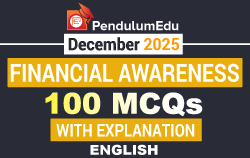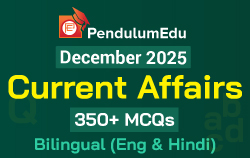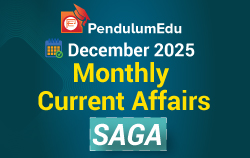List of Important Government Schemes of India 2023
Government Schemes are welfare measures announced by the government from time to time. These schemes could be either Central, State specific or a joint collaboration between the Centre and the States.
Centrally Sponsored Schemes are those schemes which are implemented by the State government and are mainly funded by the Central government. In this type of scheme, both central and state government contributes.
Central Sector Schemes are those schemes which are fully funded and implemented by the Central government. Ex- Pradhan Mantri Mudra Yojana, Pradhan Mantri ujjwala Yojana, Khelo India Scheme, etc.
Here is the list of Important Government Schemes
Pradhan Mantri Awaas Yojana – Gramin (PMAY-G)
- It is a rural housing scheme. It was launched with effect from 1st April 2016 to achieve the aim of providing “Housing to All” by the year 2024.
- It envisages the completion of 2.95 crore PMAY-G houses with all basic amenities by the year 2024.
- As on 21st February 2022, 1.73 crores PMAY-G houses have been completed.
- It is being implemented and monitored through end-to-end e-governance solutions, AwaasSoft and AwaasApp.
Pradhan Mantri Fasal Beema Yojana (PMFBY)
- Its aim is to provide financial support to farmers suffering crop loss/damage due to natural calamities.
- PM Modi launched operational guidelines of PMFBY on February 18, 2016 at Sehore, Madhya Pradesh.
- Its implementation started from Kharif season 2016. PMFBY has entered in 7th year of implementation from 2022 Kharif season.
- Under the scheme, farmers can report crop loss within 72 hours of the occurrence of any event through Crop Insurance App, CSC Centre or the nearest agriculture officer.
- The scheme allows the farmer to resolve grievances through IEC activities such as Crop Insurance Week.
- Around 85% of the farmers enrolled with PMFBY are small (having 1-2 hectare land) and marginal farmers (having land below 1 hectare).
Pradhan Mantri Shram Yogi Maandhan (PM-SYM)
- It is a pension scheme for unorganized workers.
- The beneficiary of the scheme should be in the age group of 18-40 years.
- The beneficiary will receive a monthly pension of Rs 3000/- per month after he/she attains the age of 60 years.
PM Suraksha Bima Yojana (PMSBY)
- It was launched on 9 May 2015.
- Provides affordable insurance for poor & underprivileged people of 18 to 70 years.
- Risk coverage under scheme is Rs 2 lakh for accidental death & full disability and Rs 1 lakh for partial disability.
- The new premium for the scheme will be Rs. 20 per annum (earlier it was Rs. 12 per annum).
- The scheme is offered by Public Sector General Insurance Companies or any other General Insurance Company.
PM Jeevan Jyoti Bima Yojana (PMJJBY)
- It was launched on 9 May 2015. The age limit for this scheme is 18-50 years.
- It provides life cover of Rs 2 lakhs in case of death of the insured, due to any reason.
- Annual premium amount for this scheme is Rs 436 (earlier it was 330 rupees). The life cover of the member ends at the age of 55 years.
- The scheme is offered by Life Insurance Corporation and all other life insurance companies.
Atal Pension Yojana (APY)
- It was also launched on 9 May 2015. The age limit is 18 to 40 years.
- Administered by Pension Fund Regulatory and Development Authority (PFRDA).
- Subscribers receive guaranteed minimum monthly pension of Rs 1000 or Rs 2000 or Rs 3000 or Rs 4000 or Rs 5000 at the age of 60 years.
PM CARES for Children' Scheme:
- It was launched by PM Modi on 29 May 2021.
- It was launched to help children who have lost both their parents to the Covid-19 pandemic during 11 March 2020 to 28 February 2022.
- It also covers children who have lost legal guardians or adoptive parents to Covid-19 pandemic during 11 March 2020 to 28 February 2022.
- The child should not have completed 18 years of age on the date of death of the parents.
- Nodal Ministry: Women and Child Development
Ayushman Bharat Digital Mission
- It was launched by PM Shri Narendra Modi on 27 September 2021.
- It was launched for developing an integrated digital health infrastructure in the country.
- The National Health Authority (NHA) will be the implementing agency of Ayushman Bharat Digital Mission (ABDM).
- It was earlier called the 'National Digital Health Mission'.
Ayushman Bharat-Health and Wellness Centres (AB-HWCs)
- Government announced the setting up of 1,50,000 AB-HWCs in February 2018.
- The first AB-HWC was inaugurated on 14th April 2018 at Jangla village in Bijapur District of Chhattisgarh.
- Against the target of 1,10,000, a total of 1,17,440 AB-HWCs are made operational across the country by the end of March 2022.
Mahatma Gandhi National Rural Employment Guarantee Act 2005 (MGNREGA)
- It was passed by Parliament on 23rd August 2005. It came into force on 2 February 2006.
- In October 2009, National Rural Employment Guarantee Act 2005 was amended and its name was changed from NREGA to MGNREGA.
- Under MGNREGA, there is a provision to provide at least 100 days of guaranteed wage employment in a financial year to every rural household whose adult members volunteer to do unskilled manual work.
Ek Bharat, Shrestha Bharat
- It was launched on 31 October 2015 on the birth anniversary of Sardar Vallabhbhai Patel.
- It aims to celebrate the unity in diversity and showcase the rich cultural heritage, traditions and customs of either State.
Immigration Visa Foreigners Registration Tracking (IVFRT) scheme
- It is administered by the Ministry of Home Affairs.
- It aims is to interlink and optimize functions related to immigration, visa issuance, registration of foreigners, and tracking of their movements in India.
- It provides a secure and integrated service delivery framework that facilitates legitimate travellers while strengthening national security.
Beti Bachao, Beti Padhao scheme
- It was launched by Prime Minister Narendra Modi in January 2015 in Panipat, Haryana.
- It aims to encourage enrollment of girls in schools and to improve the efficiency of welfare services meant for women.
Atal Mission for Rejuvenation and Urban Transformation 2.0 (AMRUT 2.0)
- It was launched by PM Modi on 1 October 2021 with an aim to develop water secure cities in the spirit of Atmanirbhar Bharat.
- It targets to provide reliable 2.68 crore new water tap connections to all in about 4,800 statutory towns.
- It also proposes to get universal household coverage of sewerage/ septage services in 500 AMRUT cities through new sewer connections.
KISAN Rail Scheme
- Kisan Rail is an initiative that was announced during Budget 2020-21 to help farmers to transport their agricultural produce to distant marketplaces quickly.
- Ministry: Ministry of Railways
- NOTE:
- First Kisan Rail was started between Devlali Station of Maharashtra and Danapur Railway Station of Bihar.
- The first Kisan Rail of South India was started between Anantpur and New Delhi.
- The 100th Kisan Rail was started from Sangola in Maharashtra to Shalimar in West Bengal.
- 1000th trip was started from Savda in Maharashtra to Adarsh Nagar in Delhi.
Aspirational Districts Programme
- Aspirational Districts Programme was launched in 2018 for the development of under-developed districts across the country.
- It focuses on the strength of each district and identifies sectors for immediate improvement.
- NITI Aayog releases a ranking of districts every month.
- The ranking is based on the 5 broad socio-economic themes - Health & Nutrition, Education, Agriculture & Water Resources, Financial Inclusion & Skill Development, and Infrastructure
National e-Vidhan Application (NeVA) programme
- The main objective of the programme is to bring all the state legislatures of India at one platform.
- It has been developed on the theme of 'One Nation – One Application'.
- Its implementation is funded by the Centre and the state government on a 90:10 sharing basis.
Skill India Mission
- It was launched on 15 July 2015 by PM Modi.
- It aims to train over 40 crore people in market-relevant skills by 2022.
- Green Skill Development Programme (GSDP) is an initiative of the Ministry of Environment that aims to develop skill in the environment and forest sector so that youths can get gainful employment. It is in line with Skill India mission.
Pradhan Mantri Schools for Rising India (PM SHRI) scheme
- It was approved by Union Cabinet on 5 September 2022.
- PM-SHRI schools will impart education through a modern, transformational and holistic method.
- These schools will become model schools and in these schools emphasis will be given to the discovery-oriented and learning-centric way of teaching.
Export Promotion Capital Goods (EPCG) scheme
- The scheme was launched in 1990s.
- The objective of the scheme is to promote import of capital goods for producing quality goods and services and increase manufacturing competitiveness of India.
- The scheme enables import of capital goods for pre-production, production and post-production with zero customs duty.
- These goods are exempted from IGST and Compensation cess upto 31 March 2020.
- It covers manufacturer exporters with or without supporting manufacturers, merchant exporters tied to supporting manufacturers and service providers including Common Service Providers (CSP).
Members of Parliament Local Area Development Scheme (MPLADS)
- It is a central government scheme formulated on 23 December 1993.
- Under this scheme, MPs can recommend development programmes of expenditure of ₹5 crore every year in their constituencies.
- Both Lok Sabha and Rajya Sabha MPs can recommend projects. The funds for the projects are transferred to local authorities.
UDAN Scheme
- The scheme was launched in April 2017 under the Ministry of Civil Aviation.
- It is a flagship scheme of the central government, which was launched with the objective of connecting regional routes, promoting balanced regional development and making flights affordable for the common people.
- The Udan scheme is a major component of the National Civil Aviation Policy, which was launched in June 2016.
Deen Dayal Upadhyaya Grameen Kaushalya Yojana (DDU-GKY)
- It is a program of the Ministry of Rural Development.
- It is a placement-linked skilling program under the aegis of the National Rural Livelihood Mission (NRLM).
- It was launched on 25 September 2014. It caters to rural poor youth.
- It is currently being implemented in 27 States and 4 UTs.
Atal Bhujal Yojana
- It was launched in 2020. It is being implemented in 80 districts of seven Indian states.
- The main focus of the scheme is to bring community behavioural change towards conservation and smart water management.
- The scheme also encourages innovative irrigation techniques to improve water efficiency.
- It focuses on groundwater recharge and demand-side interventions.
PM SVANidhi Scheme
- It was launched on 01 June, 2020. It aims to restore self-employment, self-sustenance, and self-confidence among street vendors.
- It has become one of the fastest growing micro-credit schemes of the Government of India.
- The scheme facilitates working capital loans in three tranches to the Street Vendors. Digital onboarding and training have been key component of the scheme.
Nyaya Vikas Scheme
- Since 1993-94, the Department of Justice has been implementing the Centrally Sponsored Scheme (CSS) for Development of Infrastructure Facilities for Districts and Subordinate Judiciary.
- Under the Scheme, central assistance is given to the State Government / UT Administrations for constructing court halls and residential units for Judicial Officers / Judges of District and Subordinate Courts.
- The scheme was extended beyond 31 March 2021 and some new features were added like construction of Lawyers Hall, Toilet complexes and Digital computer rooms for the convenience of lawyers and litigants.
- Under the scheme, the funds sharing pattern between centre and state for North Eastern and Himalayan States is 90:10, 100% in respect of Union Territories and 60:40 for other states.
Pradhan Mantri Mudra Yojana
- The scheme was launched on 8th April 2015.
- Under the scheme, a loan of upto Rs. 50,000 is given under sub-scheme ‘Shishu’.
- Between Rs. 50,000 to 5.0 Lakhs under sub-scheme ‘Kishore’; and
- Between 5.0 Lakhs to 10.0 Lakhs under sub-scheme ‘Tarun’.
- Loans taken do not require collaterals.
Pradhan Mantri Vaya Vandana Yojana
- It was launched on 4th May 2017.
- It was launched to protect elderly persons aged 60 years and above against a future fall in their interest income due to uncertain market conditions, as also to provide social security during old age.
- The scheme is implemented through the Life Insurance Corporation of India (LIC) and open for subscription upto 31st March, 2023.
- Minimum purchase price under the scheme is Rs. 1,62,162/- for a minimum pension of Rs. 1000/- per month and the maximum purchase price is Rs. 15 lakh per senior citizen for getting a pension amount of Rs. 9,250/- per month.
New Integrated Food Security Scheme
- New Integrated Food Security Scheme has been named Pradhan Mantri Garib Kalyan Ann Yojana (PMGKAY).
- Implementation of the new scheme has started from 1st January 2023.
- All Primary Household and Antodaya Ann Yojna beneficiaries would receive free food grains under PMGKAY in 2023, as per entitlement under National Food Security Act (NFSA).
Pradhan Mantri Kisan Urja Suraksha evam Utthaan Mahabhiyan (PM-KUSUM) Scheme
- The government has extended the scheme until March 2026 because its pace of implementation has been hampered by the pandemic.
- PM-KUSUM Scheme was launched in 2019.
- Its main aim is to ensure energy security for farmers in India and to increase the share of installed capacity of electric power from non-fossil-fuel sources to 40% by 2030.
New India Literacy Program (NILP)
- It will be implemented over five years from FY 2022-23 to 2026-27 with a financial outlay of Rs 1037.90 crore, of which Rs 700.00 crore is central share and Rs 337.90 crore is state share.
- The aim of the scheme is to cover a target of 5.00 crore non-literates in the age group of 15 years and above.
- The Scheme has five components:
- Foundational Literacy and Numeracy
- Critical Life Skills
- Vocational Skills Development
- Basic Education
- Continuing Education
Pradhan Mantri Van Dhan Yojana
- It was launched by Prime Minister Narendra Modi on 14 April 2018 in the tribal-dominated Bijapur district of Chhattisgarh.
- The aim of the scheme is to upgrade the status of tribal people from mere gatherers of minor forest produce like mahua, tamarind, chironji, etc, to entrepreneurs and help them learn the value addition to the forest produce.
Frequently Asked Questions (FAQs) about Indian Government Schemes
When was Pradhan Mantri Fasal Bima Yojana launched?
Pradhan Mantri Fasal Bima Yojana was launched on 18 February 2016.
When was Pradhan Mantri Mudra Yojana launched?
Pradhan Mantri Mudra Yojana was launched on 4 May 2017.
PM-KUSUM Scheme has been extended till which year?
PM-KUSUM Scheme has been extended by the government until March 2026.
Stand Up India Scheme was launched in which year?
Stand Up India Scheme was launched on 5 April 2016.
When was Pradhan Mantri Van Dhan Yojana launched?
Pradhan Mantri Van Dhan Yojana was launched in 2018.




 Latest
Latest 



Comments